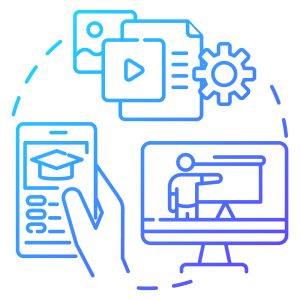Education might not be the first industry that springs to mind when you think of edge computing, but the concept is shaping up to have a profound effect. This processing and storage medium is all about data sorting and reacting in real-time. Not only does this have a massively positive effect on costs, but it brings a whole host of digital education possibilities to the fore.
Before we dive into the benefits, we’ll give a quick overview of what edge computing actually is. In direct contrast to the cloud – where data travels tens of thousands of miles to be processed and actioned, edge computing occurs very near to where the data is created. By having processing hardware close by, it can be quickly sorted, actioned and returned, removing any latency and relieving overloaded networks.
In addition to this, edge capability offers enhanced security and can be considerably cheaper than its comparable cloud cousin. It also removes the need for institutions to house server rooms – something that’s expensive both in money and real estate terms.
Key advantages that the edge will bring to education
1. Using VR and AR for a more realistic learning experience: Augmented reality and virtual reality are already being utilised in schools. However, unless the experience is truly seamless, it interferes with how the brain processes the information it sees. This holds true even if the delays are imperceptible, as cognitive processing is stilted at a subconscious level. Smooth processes bring about learning experiences in a lifelike manner. Imagine medical students being able to perform operation scenarios, coders living the outcomes of their programming or engineers seeing the fruits of their labours come to cyber-reality.
2. Taking full advantage of the IoT: Kindergarten and early educators can use toys with sensors in to follow and assess a child’s learning journey… Use a camera to track eye movements to help understand how a pupil is learning to read… Teachers can create smart lesson plans and track attendance… The potential of fully utilising IoT devices is almost infinite.
3. Improving cyber security: Hacks and cyber-attacks are becoming more and more common. Thanks to local storage offered by edge computing and the extra layer of security this affords, should a school or college be targeted, it won’t necessarily bring the whole system down.
4. Machine learning and AI: Technology that’s able to react to a student’s input is highly advantageous. This can lead to an almost personalised learning experience – one that’s dynamic and is guided by both their strengths and weaknesses.
5. Reducing costs: As with every industry, the more streamlined processes become, the more funds can be channelled to where they’re most effective. Reducing reliance on expensive cloud computing – perhaps running a hybrid edge-cloud model – that not only costs less but frees up teachers to spend more time with their students.
Moving towards the edge is already a partial reality. Other advantages include easier facilitation of online tests, scenarios and exams, as well as teachers being able to follow what their charges are doing on their computers and tablets.
At Zella DC, our micro data centres offer the perfect solution to be integrated into smart classrooms. In fact, the requirements for the ultimate edge computing network within an educational facility have many similarities to other businesses. Our expert team works with each of our clients to discover the best bespoke solution to facilitate their needs.






